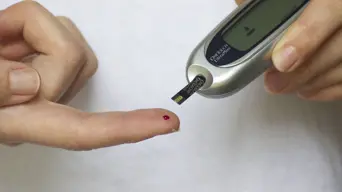Diabetes related to malnutrition finally classified formally as 'type 5 diabetes'
Paula Luckhoff
6 October 2025 | 7:50This distinct form of the disease is linked to chronic undernutrition and health disparities in specific parts of the world.

FILE: Knowing your diabetes status is essential for treatment. Picture: TesaPhotography via Pixabay
It's estimated that one in nine people in South Africa live with diabetes (mellitus).
As our healthcare practitioners and health authorities try to raise awareness of the importance of testing and management of this disease, most of us have heard at least of Type 1 and Type 2 diabetes.
RELATED: Diabetes does NOT need to be a death sentence: When to get tested
Another variant is now also in the spotlight: Malnutrition-related Diabetes Mellitus (MRDM) was formally classified internationally as Type 5 diabetes earlier this year.
This distinct form of the disease is linked to chronic undernutrition and health disparities.
Dr Fundile Nyathi notes that formally categorising this has been a long time coming.
"For a long time we just talked about two types of diabetes - type 1 being where a person doesn't produce enough insulin or any at all in the pancreas... and type 2 which is usually associated with people who are overweight where the pancreas does produce insulin, but the receptors in the various tissues of the body have problems getting it."
Dr Fundile Nyati, CEO - Proactive Health Solutions
"In recent times other types have been described - there is gestational diabetes (during pregnancy); a type 3 which is linked to cases where there is damage or disease in the pancreas itself... and type 4 which still needs more clarity, but is associated with glaucoma and sometimes called brain-associated diabetes mellitus.... and now there is type 5."
Dr Fundile Nyati, CEO - Proactive Health Solutions
Type 5 was formally classified at an international meeting of experts convened in India in January 2025, and then endorsed in April by the International Diabetes Federation at its world congress in Thailand.
Dr Nyati points out that the condition was first described back in 1955 by a physician in Jamaica.
"It took 30 years for the World Health Organization (WHO) to recognise it in 1985, when it was called malnutrition-related diabetes mellitus. However, 14 years later in 1999, they dropped this again because they felt there wasn't enough evidence linking malnutrition and this type of diabetes."
Dr Fundile Nyati, CEO - Proactive Health Solutions
Why type 5 is particularly relevant in South Africa is because we are one of those low- to medium-income countries where it typically occurs, Dr Nyati says.
And while there isn't much research into this yet locally, we might well find that people who have type 5 have been misdiagnosed and treated for type 1, which can be very dangerous for their health.
The broad features of this diabetes variant include a history of undernourishment in utero and in early childhood, which leads to the pancreas not developing normally.
Typically, these patients would be underweight, with a BMI of less than 18.5.
"In their adolescence and young adulthood they present with the problem of severe impairment in the production of insulin, because of this early malnutrition... They tend to have very raised blood sugar levels and features that do not link to other types, for example antibodies to the cells that produce insulin. The receptors in the body are actually functioning well, which is something that we'd find with type 2..."
Dr Fundile Nyati, CEO - Proactive Health Solutions
"Medical practitioners would then treat these people with insulin, which causes more problems. They do better with oral drugs that are usually used for type 2, and just a little bit of insulin."
Dr Fundile Nyati, CEO - Proactive Health Solutions
This is why the new classification is important to raise awareness of type 5, and guard against simply replacing insulin, which can even lead to death in these patients, he says.
For more detail, listen to the interview audio at the top of the article
Get the whole picture 💡
Take a look at the topic timeline for all related articles.
















